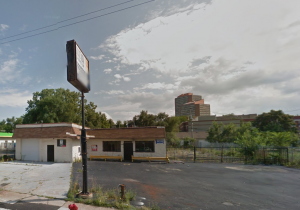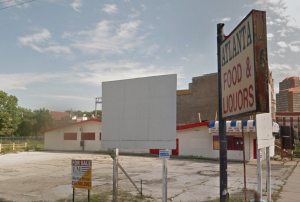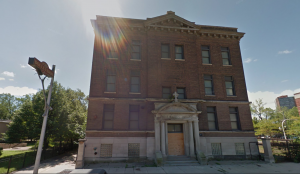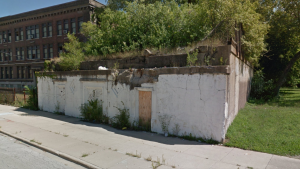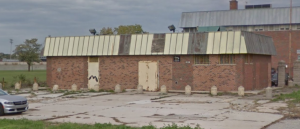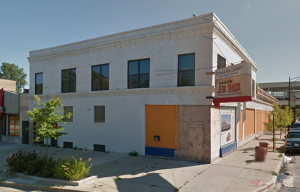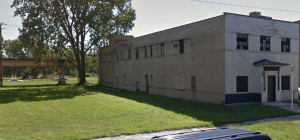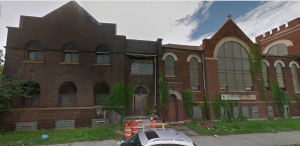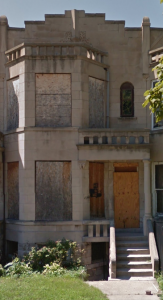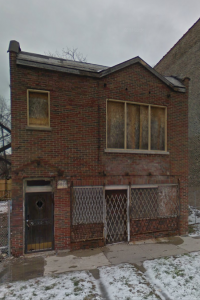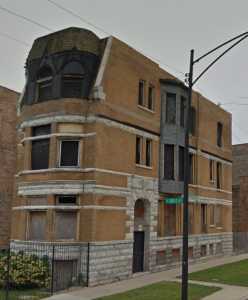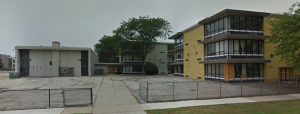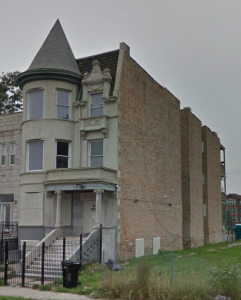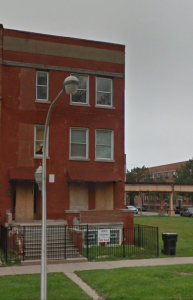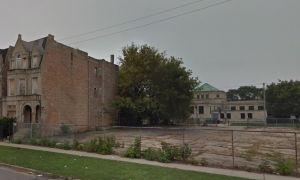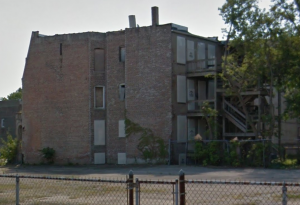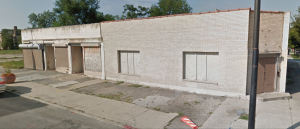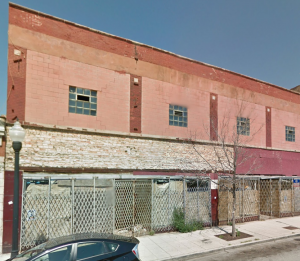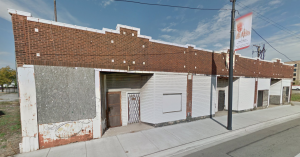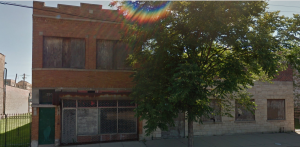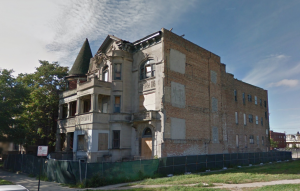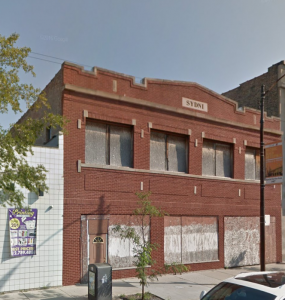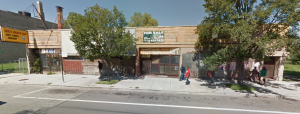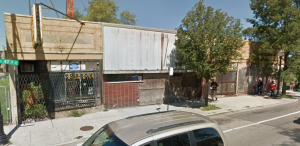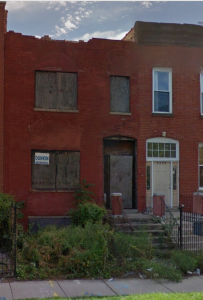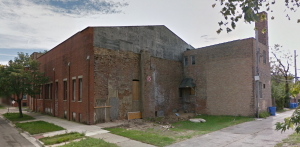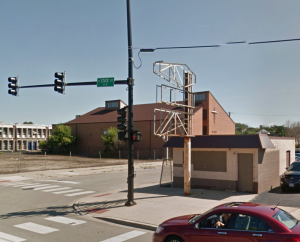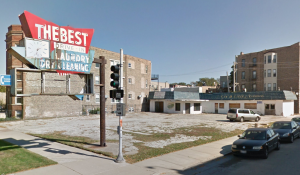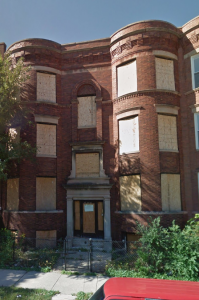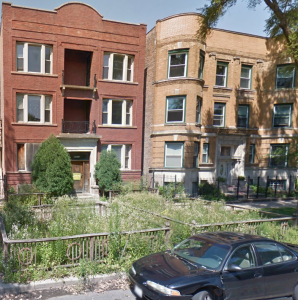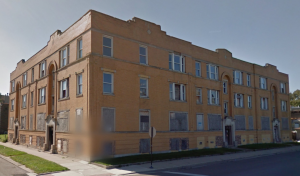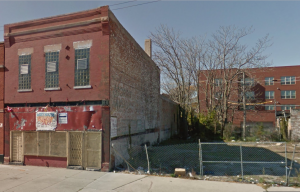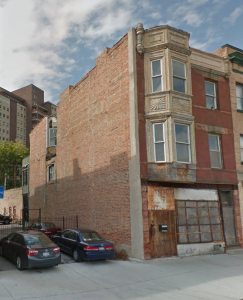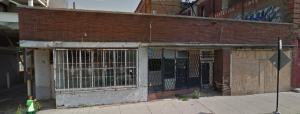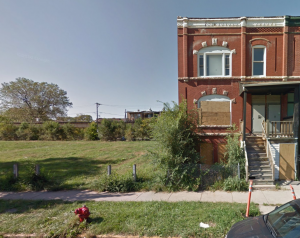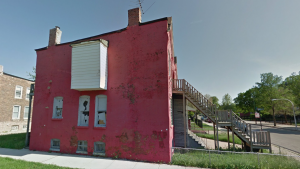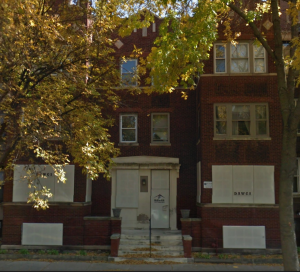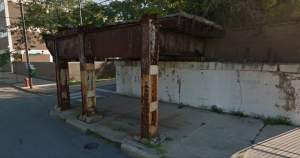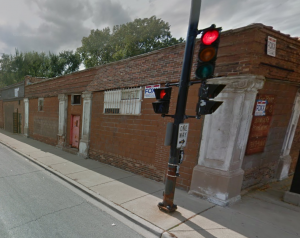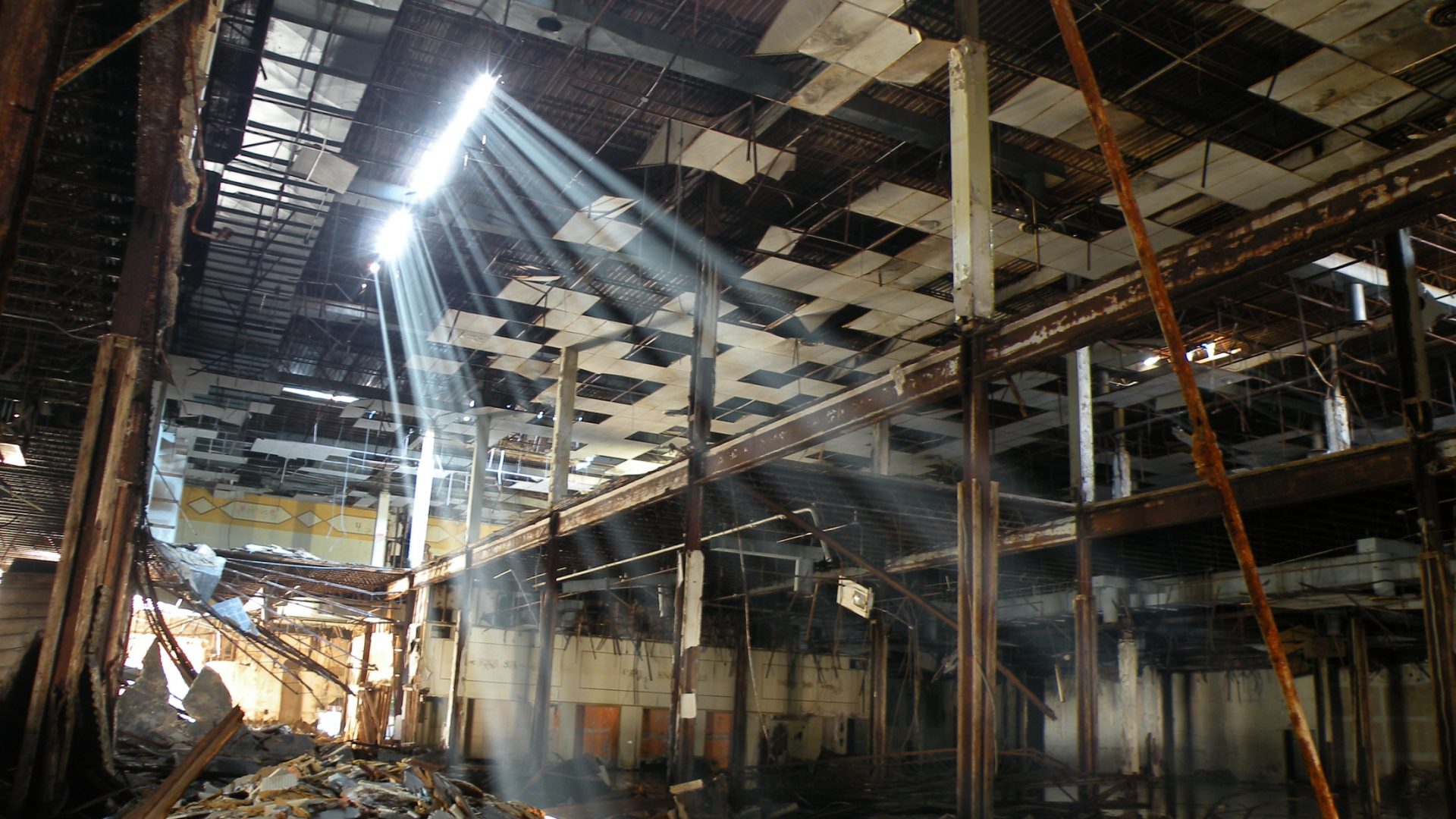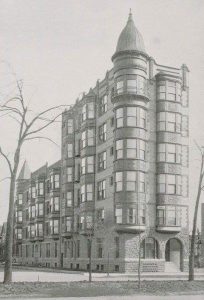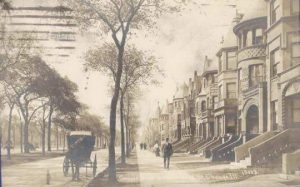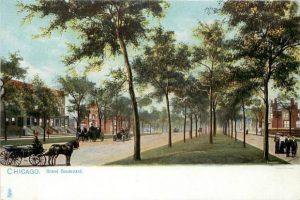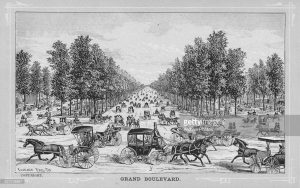| Origins | Annexed c. 1889 |
|---|---|
| Area | South Side |
| Boundaries | Pershing Road on the north, 51st Street on the south, Cottage Grove Avenue on the east, railroad tracks by Federal Street on the west |
| Gangs headquartered | Gangster Disciples, Black Disciples, Black P Stones, Vice Lords, |
This neighborhood was not significant in the very early years of Chicago’s history as it was a heavily wooded area with several prairies. There was likely settlement here and there in the area but not much information is out there.
In the year 1861 the area was annexed into Hype Park Township and functioned as a governed rural area.
In the year 1874, a horse carriage route was dug where we call Martin Luther King Boulevard in present day, as of 1874 the route was known as “Grand Boulevard” and it was traveled by tradesman and even by wealthy elites as they ventured to and from Chicago. Eventually the many planted trees near Grand Boulevard and the carriage route made ideal living conditions for Chicago’s elite as they built several elegant mansions along Grand Boulevard.
Irish and black settlers immediately arrived simultaneously in the year 1874 along Federal and State Streets as an extension of the Federal and State Street settlement in Douglas. Because of this immediate early settlement by blacks in 1874 in gave blacks the right to live here for many generations to come. Just like in neighboring Douglas, the west side of the neighborhood along State and Federal Streets was settled by blacks and Irish of the lower income class. The east of State Street was mainly wealthy Jewish elites all of which had empathy for blacks struggling with discrimination.
In the year 1889 annexation would take place making this neighborhood an official Chicago neighborhood.
With the annexation brought the buildup of many commercial businesses and residential homes thanks to the paving of roads and mass transit. The community was viverant with a mix of upper class, middle class and working-class Chicagoans. The neighborhood was then named after the very Avenue that made the neighborhood so great, “Grand Boulevard.”
State Street and Federal Streets was the site of railroad jobs and many factories that left heavy pollution in the direct vicinity. The cottages and apartments became full of dirty air and heavy smells making living conditions harder. Many Irish began to move out of the area from the 1890s until the 1920s, but black families would not be able to have the privilege to move away.
Beginning in the year 1890 blacks began to settle in the more eastern part of the neighborhood especially after white elites began to move out of their mansions to escape the noise and pollution of the neighborhood. This became prime opportunity for black middle classes to move into these mansions creating the first black middle class and upper-class community in Chicago. Some mansions were, however, sold to landlords that subdivided the mansions into low-income tenement housing creating squalid conditions that many desperate black families would move into. Some of these buildings were also turned into skeevy hotels.
In the 1900s decade more immigrants of European ancestry moved into the neighborhood causing a larger boom in population and businesses, this made the neighborhood one of the most desirable neighborhoods to live in.
During the World War I years African American migration greatly increased as southern blacks flocked to Chicago in search of new opportunities especially after many white Chicagoans went off to war. The neighborhoods of Douglas and Grand Boulevard were the most attractive for African Americans because there were other native blacks in these neighborhoods and there were plenty of jobs, as the neighborhood rapidly transformed to 32% African American by 1920.
By the end of the 1920s decade the neighborhood was 94% African American as whites had left after achieving upward mobility. the neighborhood was now completely a part of the “Bronzeville” section that included the nearby Douglas and partially Oakland neighborhoods.
During World War I and right after the war the black Policy racket came to Grand Boulevard from nearby Douglas. The Policy racket was then run by successful black Policy Kings by 1918 and in no time the Policy gangsters ran the streets of Grand Boulevard as well in the 1920s.
Some of the first black street gangs formed in the Bronzeville area. Black street gangs formed during the 1919 race riots as scores of Irish gangs invaded black neighborhoods to attack many blacks. Blacks felt the need to fight back by fighting fire with fire and this is when the oldest of black gangs formed on these streets. The black gangs mainly formed in the Douglas area, but their influence quickly spread to Grand Boulevard as this was the second part of Bronzeville. After the riots these gangs were mainly small groups of hustlers that made a living by showing tourists to the best restaurants and nightlife while also showing tourists to any pimps, drug dealers or gambling dens if the tourists requested it.
The Policy racket was a criminal organization that killed, stole, illegally gambled and committed other crimes; however, they were good for the Grand Boulevard community as they provided jobs within their legitimate businesses and gave donations to many struggling black families especially during the holiday season.
Grand Boulevard became the epicenter of the Bronzeville area as many restaurants, stores, saloons, entertainment, jazz clubs and blues clubs opened in the community. The neighborhood combined black southern culture with Chicago culture and the neighborhood even thrived when the Great Depression era closed many black owned businesses, the Policy racket helped keep the community alive in the 1930s as they now reached millions in profits.
During the World War II years Grand Boulevard was thriving once again as more businesses were opening and the Policy racket was at the peak of its success, the war industry also employed several African Americans in the neighborhood.
The neighborhood was the home of black upper-class elites, professional black sports players and many black intellectuals in politics, law and medicine. The black belt extended all through Grand Boulevard that was lined with several dilapidated houses and kitchenette apartment buildings along State Street on the west side of the neighborhood. Grand Boulevard was also a neighborhood where African Americans would move to if they experienced upward mobility; this would all start to come to an end after the war.
When World War II ended so did the war industry which put many African Americans out of work with no job prospects lined up. In 1945 the Outfit’s Sam Giancana began muscling in on the black Policy racket and in 1946 he forced Ed Jones and most of the Policy Kings out of business.
The racket employed over 10,000 people in the black community and once the Mafia began the takeover, many black Chicagoans were left jobless.
This was also a time period of heavy crowding in the Bronzeville area. Migrating southern blacks were of some of the most impoverished element from the south and now sought refuge in Bronzeville. Bronzeville was one of the only areas in Chicago that would house thousands of blacks as other neighborhoods had restrictive covenants or were downright hostile towards blacks trying to move in. This led to extreme overcrowding as squalid tenement apartments were further subdivided creating hellholes. Impoverished blacks lived in awful and inhumane conditions that the city began taking notice of in 1941.
As more black southerners arrive a less talked about phenomena started called “black flight.” Black flight is when middle class and upper class blacks move out of an area to get away from lower income blacks because of the depreciation of the neighborhood and the higher income classes no longer wanted to carry such a burden on their shoulders.
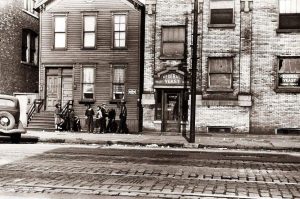
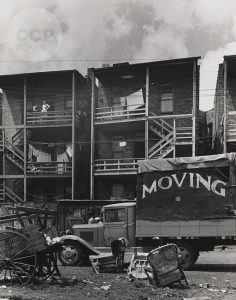
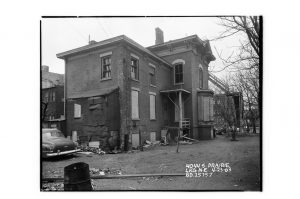
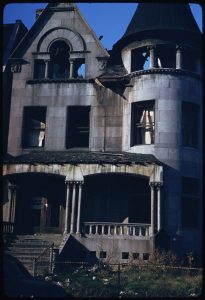
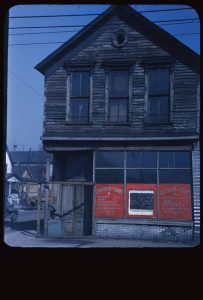
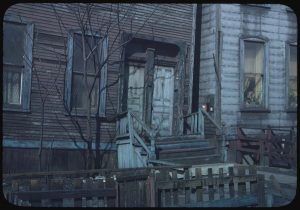

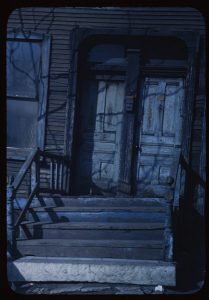
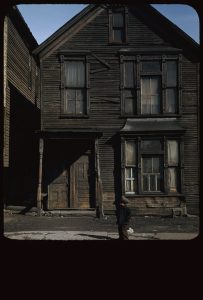

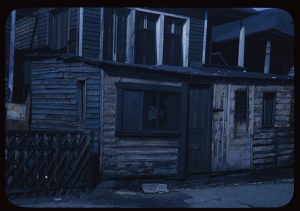
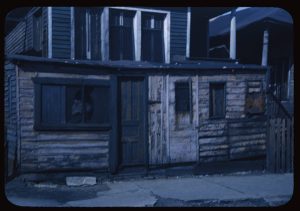
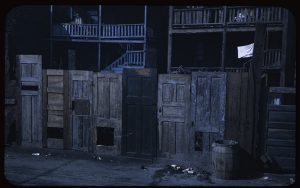

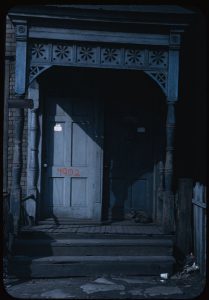
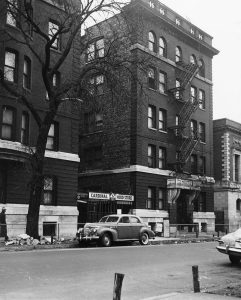
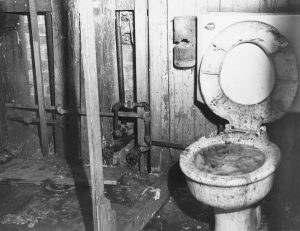
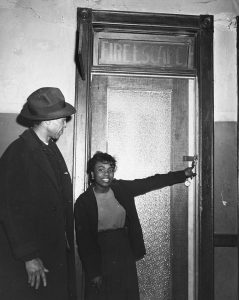

In 1952 it only became worse when the last Policy King Teddy Roe was gunned down in nearby Washington Park by Sam Giancana’s men. Sam Giancana then took over the Policy racket completely and began selling Heroin in the black community.
The drug dealers that were moving Giancana’s Heroin were adult male dealers at first that refused to sell to the youths, gangs and women in the neighborhood back in the 1950s; however, Heroin became a growing problem as a portion of the black males in the community became addicted to cocaine and heroin. These men were supposed to be the patriarchs and providers for the community and their families.
Many homes, apartments and buildings fell into deterioration as the neighborhood became too poor to renovate and the city had no interest in fixing anything now that Ed Jones was no longer around to pull political strings for the community.
The “Black Belt” part in Grand Boulevard became even more dilapidated as several run-down houses and burned out apartment buildings lined this State Street strip between Pershing Road to 51st Street since the 1920s, now they were in an even worse state of existence in the 1950s.
In the year 1958, the first migratory gang arrived in Grand Boulevard on 45th and State known as the “Egyptian Cobras” that moved in from Fuller Park. The Cobras first took up residence in the black belt tenements along State Street until they were removed by 1960. The Cobras were a different breed of gang that was more violent and aggressive than the Deacons.
In the year 1960 the Chicago Housing Authority had a plan to deal with this horrific black belt strip on and near State Street and that was to build the largest public housing projects in the country called the Robert Taylor Homes that would stretch all through the black belt from Pershing Road to 51st Street and Federal Street to State Street, then it would extend into the Washington Park neighborhood from 51 Street to 54th Street from Federal to State. These projects were completed in 1962 and the construction of another project complex started that year called the Washington Park Homes from 44th Street to 45th Street and Cottage Grove Avenue to Evans Street, these were completed in 1964. The first major street gang to move into the Robert Taylor projects were the Egyptian Cobras that took over 45th and State buildings and were in the cluster of buildings in Washington Park on 53rd and State.
The 1960s buildup of the projects seemed to help the community at first as the black families that lived there at first experienced better living conditions than they did in the 19th century dilapidated homes they lived in, in the black belt; however, crime soon became an issue in the Robert Taylors and Washington Park homes. The Black Disciples and Del Vikings moved into these buildings by the later 1960s and clashed with the Egyptian Cobras.
In the year 1966, the Blackstone Rangers united with the Four Corners gang and established a Blackstone Ranger faction in this community, now there were Rangers, Cobras, Del Vikings and Disciples and no more room for any other smaller gangs.
Black P Stones set up headquarters for their faction including the Titanic P Stone headquarters at 43rd and Indiana (The Camp). Not far away on 42nd was the headquarters of the Israelite Stones; therefore, buildings in this community were being purchased by street gangs. The Black P Stones and El Rukns exercised major control of this community and even dominated the Washington Park Homes. The Jet Black Stone branch-controlled Washington Park Homes. The Gangster Disciples moved into the Robert Taylor homes in 1981 and flipped many Disciples into adopting “Gangster” concepts. The neighborhood now was dominated completely by Black Disciples, Gangster Disciples and Mickey Cobras (formerly Egyptian Cobras) were running the Robert Taylor projects while the rest of the community was under the control of El Rukns and Black P Stones. In the year 1979 Insane Vice Lords moved into the community known as the “Prairie Insane Vice Lords.” This was a violent group of Vice Lords.
During the 1970s, the Robert Taylor projects had declined severely. Crime and gang violence became common place in these buildings. During the 1970s the Robert Taylors were dominated by Mickey Cobras, Black Disciples and Del Vikings. Around the rest of the streets of Grand Boulevard was heavy deterioration and blighted buildings.
In the year 1977, the El Rukns laid claim to some of these lands as they attempted to clean the area up to their liking which resulted in violent gang wars with adversaries.
In the year 1979, sanctions were passed down by the El Rukns declaring that the Black P Stones were no longer legit this caused many Black P Stones to call upon the Insane Vice Lords, Conservative Vice Lords and Mafia Insane Vice Lords to come to Grand Boulevard and flip many Black P Stones, this is how the west side group of Vice Lords started here on these streets.
In the 1980s-decade gang violence intensified as drug trafficking became heavy in this area giving Bronzeville and even worse reputation. The Robert Taylor projects became nightmarish full of crime and deterioration. In the year 1981 a complex heroin trafficking ring was established by the Black Gangster Disciples in the Robert Taylors which began a new era.
The once elegance and southern soul the neighborhood had were now all gone as the 1980s and 1990s proved to be the worst decades for Grand Boulevard. When riding the Metra train or driving down the Dan Ryan Expressway one could see the hopelessness and despair of the Robert Taylor projects.
The 1990s was perhaps the most violent and blighted period for Grand Boulevard as Gangster Disciples became the dominating gang. The projects began to be torn down in 1998 which immediately weakened the Mickey Cobra presence in the neighborhood and even weakened Black Disciple influence.
In the 1990s there was a call to bring back the Bronzeville neighborhood once again and urban renewal projects were underway mostly by the later 1990s.
In the year 1999 into 2002 the Washington Park Homes were all torn down, and in 2002 until 2007 the Robert Taylor projects were torn down in the Grand Boulevard section. Both project complexes were condemned and were necessary to be torn down in order to revitalize the community. The projects were replaced with brand new town homes and condos where middle class African Americans moved back in. The only issue was heightened gang violence during the years the projects were coming down. Mickey Cobra and Black Disciple controlled buildings were some of the first ones to be torn down which caused these gangs to advance northward in the neighborhood into Gangster Disciple controlled buildings. This resulted in extreme violence until all the projects came down making the 2000s decade very rough.
The crime and other socioeconomic problems have been greatly reduced in the 21st century, and even though there is still a lot of work to do on the neighborhood Grand Boulevard is well on its way.
Grand Boulevard still has issues with many vacant lots but most of it is from the tear down of public housing. This neighborhood is not full of blighted and rundown buildings like it used to have, as many teams of contractors and community groups have tirelessly worked year-round over the past 20 years to restore old housing or even build new houses and buildings. Many shuttered businesses have been reopened and many community groups watch out for gang and drug activity. Grand Boulevard is a little behind the progress of the neighboring Douglas neighborhood but is rapidly catching up.
as it stands currently Grand Boulevard is still one the more violent and dangerous neighborhoods in Chicago; however, it seldom makes a top 10 list. Grand Boulevard will perhaps be restored fully to the black metropolis it once was, this time without the severe blight along State and Federal Streets.
In the 1940s, 1950s and earlier 1960s this neighborhood was dominated by the Deacons.
In the later 1960s and 1970s this neighborhood was dominated by the Del Vikings, Black P Stones, Mickey Cobras and Black Disciples
In the 1980s and 1990s this neighborhood was dominated by Black Disciples, Gangster Disciples, Mickey Cobras and Black P Stones
In later decades this neighborhood was dominated by Black P Stones, Black Disciples and especially Gangster Disciples which is the biggest gang on these streets.
The significant gangs that once walked these streets are:
Deacons
Not sure of where they were in Grand Boulevard
Del Vikings
Dominated northern part of the Robert Taylor projects
Black P Stones Established 1966
47th & Cottage Grove (Jet Blacks)
43rd & Indiana (Lake Park Meadows projects Titanic Stones) Established 1966
42nd & Prairie (El Rukns, Israelite Stones) Established 1976
44th from Evans to Cottage Grove (Washington Park projects, Jet Blacks, 4445 S. Cottage Grove, The 4-5)
45th & Champlain (Jet Blacks)
45th & Indiana (Jet Blacks)
Black Disciples Established 1966
47th to 49th, Vincennes to St. Lawrence (Hitzsquad)
45th to 46th, Forrestville to Champlain (5th ward)
49th from Federal to State (Robert Taylor projects) Established 1966
43rd from Federal to State (Robert Taylor projects) Established 1998-2006
45th & Federal (Robert Taylor projects, House of Pain, Shortyville)
Wabash from 45th to 47th (New Jack City)
47th & Michigan
48th & State (Robert Taylor projects, 3rd World)
Mickey Cobras Established 1958 as Egyptian Cobras
50th to 51st, St. Lawrence to Cottage Grove (051 YM)
45th & State Established 1958-1960
45th & State Robert Taylor projects 4555 and 4525 buildings Established 1962-1977
40th Place and Federal Robert Taylor projects 4101 building Established 1962-1977
State Street from 48th to 49th Robert Taylor projects and 4844 building (Fidel Castro Cobras) Established 1967-1977
49th to 51st, Martin Luther King Dr to Cottage Grove (The Gutter)
Gangster Disciples Established 1966 as Devil’s Disciples
47th Street from State to Martin Luther King Dr.
51st & Michigan (5-1 Block)
51st & Calumet (Met Boy Gangsters)
51st & Prairie
43rd to 46th, Prairie to Martin Luther King (Jigdogs BGGDS)
45th to 46th, Champlain to Evans (TMB Touchmoney rap group)
49th to 51st, State to Indiana (Vulture City)
47th to 49th, Indiana to Martin Luther King (Dell mob)
Federal from 40th to 41st (Robert Taylor projects, 40 strong)
43rd to 44th, Federal to State, Robert Taylor projects, Brick City)
48th & State (Robert Taylor projects, Vulture City)
50th & Federal (Robert Taylor projects, Nickle O)
51st & State (Robert Taylor projects, 51st Gangster City)
45th to 47th, Langley to Forrestville (5th Ward)
43rd & Forrestville
47th & Vincennes (The Junkyards)
40th & Michigan
Conservative Vice Lords Established 1979
44th & Evans (Washington Park projects)
Mafia Insane Vice Lords Established 1979
44th & Evans (Washington Park projects)
Insane Vice Lords Establishd 1979
Somewhere on Prairie Ave (Prairie Insane Vice Lords) Established 1979
All images below are photos of vacant properties at the time of the photo. All images below are courtesy of Google Maps.




